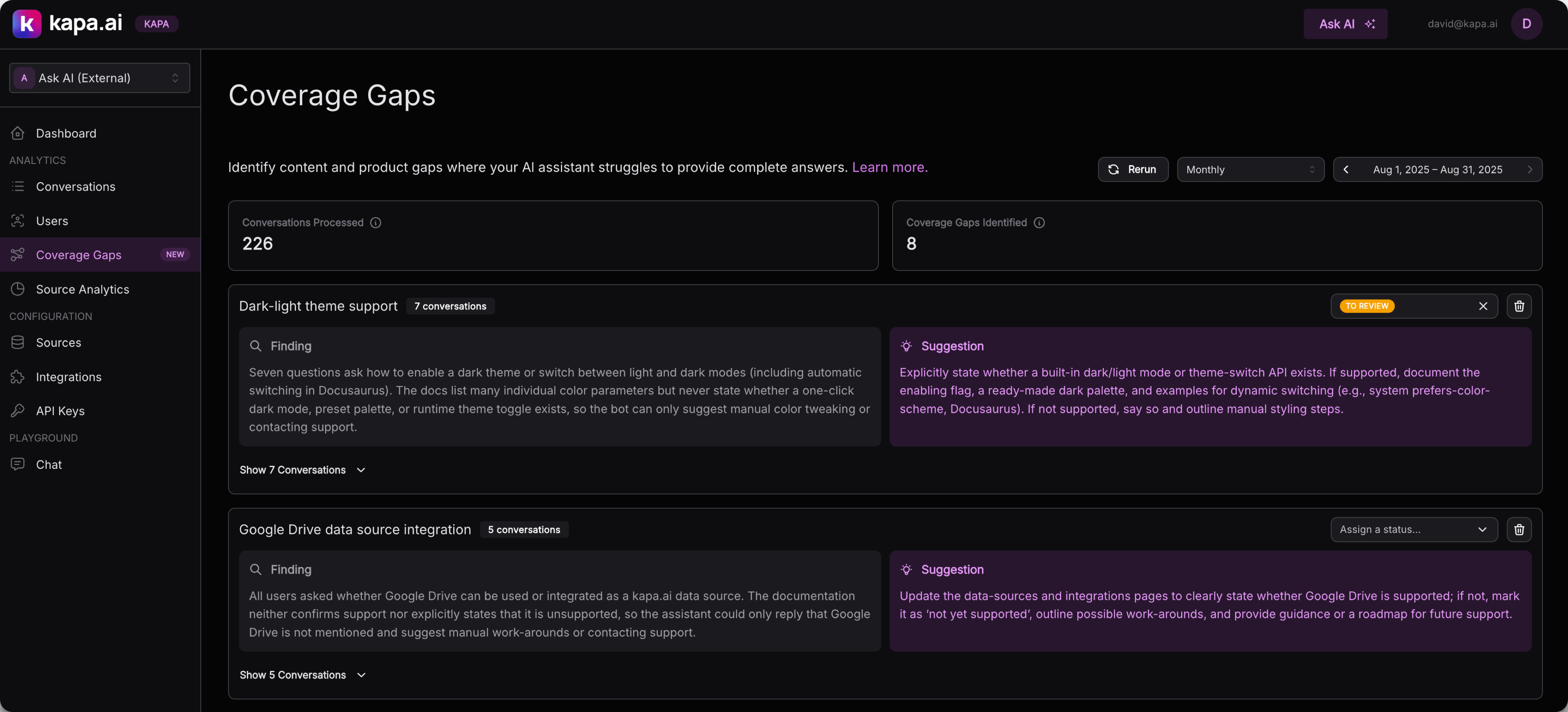Coverage Gaps
Coverage Gaps identifies common topics where Kapa was unable to provide a conclusive answer, helping you identify content and product gaps in your documentation. Coverage Gaps focuses specifically on uncertain answers to highlight areas where users are asking questions but Kapa cannot help them effectively.

How coverage gaps work
For a selected time period (calendar week, month, or quarter), Kapa analyzes all Uncertain answers to determine common scenarios where Kapa failed to answer questions. When Kapa detects recurring topics that result in uncertain responses, it groups them into clusters and creates a summary with two parts:
- Finding: A breakdown of what users asked about and why Kapa failed to provide a complete answer
- Recommendation: AI-generated suggestions on how to address the identified gap by updating your documentation
The recommendations might suggest documenting an undocumented feature, marking a use case as unsupported, or identifying missing documentation entirely. These suggestions require human review to determine the actual problem and appropriate resolution.
Workflow
- Select time interval (weekly, monthly, or quarterly)
- Analyze the grouped uncertain responses and their summaries
- Use status tags to track progress on each cluster (for example, "Doc issue", "Feature request", or "Done")
FAQ
Why is the total count of processed conversations different from my total conversation count?
We include the first question in a conversation thread that is tagged as 'uncertain' and exclude the following:
- Threads not tagged as 'off-topic'
- Duplicate questions
What time horizons can I analyze?
Coverage Gaps are generated on a weekly, monthly, and quarterly basis. You can switch between time periods in the UI and navigate backwards and forwards to analyze how gaps change over time.
Why do I not see any clusters?
Your Kapa project needs a certain number of conversations with uncertain answers in a time period before Coverage Gaps can generate clusters. The exact number of questions depends on the questions your users ask.
How are Coverage Gaps different from the Top Questions feature?
Coverage Gaps focuses exclusively on uncertain answers to identify documentation gaps, while Top Questions analyzes all questions regardless of whether they are tagged 'uncertain' or not. This targeted approach helps you prioritize improving areas where Kapa cannot currently help users.